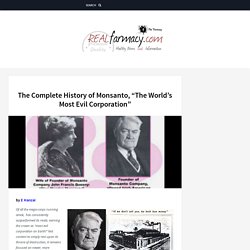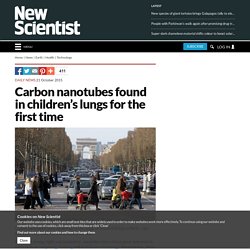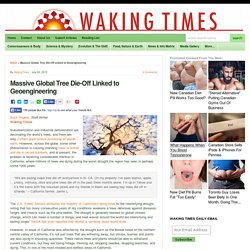

Healthy News and Information. By E Hanzai Of all the mega-corps running amok, Monsanto has consistently outperformed its rivals, earning the crown as “most evil corporation on Earth!”

Not content to simply rest upon its throne of destruction, it remains focused on newer, more scientifically innovative ways to harm the planet and its people. 1901: The company is founded by John Francis Queeny, a member of the Knights of Malta, a thirty year pharmaceutical veteran married to Olga Mendez Monsanto, for which Monsanto Chemical Works is named.
The company’s first product is chemical saccharin, sold to Coca-Cola as an artificial sweetener. Even then, the government knew saccharin was poisonous and sued to stop its manufacture but lost in court, thus opening the Monsanto Pandora’s Box to begin poisoning the world through the soft drink. 1920s: Monsanto expands into industrial chemicals and drugs, becoming the world’s largest maker of aspirin, acetylsalicyclic acid, (toxic of course). Monsanto’s Disneyfied vision of the future: Carbon nanotubes found in children's lungs for the first time. Carbon nanotubes have turned up in the lungs of children living in Paris – the first time they have been detected in humans.

Incredibly strong, light and conductive, nanotubes have shown great potential in areas such as computing, clothing and healthcare technology. Nevertheless, there has been some concern over their use after mouse studies showed that injected nanotubes can cause immune reactions similar to those produced by asbestos. To investigate, Fathi Moussa and colleagues at the University of Paris-Saclay, France, studied fluid from the airways of 64 asthmatic children, and discovered carbon nanotubes in all of the samples.
Five other children studied also had them in their macrophages – immune cells that clear unwanted particles – taken from the lungs. The level at which the nanotubes are present is unclear, as is their source, although the team found similar structures in dust and vehicle exhaust collected in Paris. Still want more? Welcome to Beautiful Parkersburg, West Virginia - The Huffington Post. Mariah Blake Home to one of the most brazen, deadly corporate gambits in U.S. history.

Story by Mariah Blake Media directed by Emily Kassie “Hold on to something,” Jim Tennant warned as he fired up his tractor. We lurched down a rutted dirt road past the old clapboard farmhouse where he grew up. At 72, Jim is so slight that he nearly disappears into his baggy plaid shirt. When we had gone as far as the tractor could take us, Jim climbed off and squeezed through a barbed-wire fence. The Tennant clan farmed the fertile patch of soil around the home place for more than a century. Massive Global Tree Die-Off Linked to Geoengineering. Buck Rogers, Staff WriterWaking Times Suburbanization and industrial deforestation are decimating the world’s trees, and there are only 2 intact giant forests remaining on planet earth.

However, across the globe, some other phenomenon is causing standing trees to wither and die in record numbers, and at present, the problem is receiving considerable mention in California, where millions of trees are dying during the worst drought the region has seen in perhaps some 1200 years. “We are seeing major tree die off everywhere in N. CA. On my property i’ve seen walnut, apple, cherry, mimosa, olive and pine trees die off in the past three months alone. The U.S. However, in areas of California less-affected by the drought such as the Boreal forest of the northern central valley of California, it’s not just trees that are withering away, but shrubs, bushes and plants are also dying in shocking quantities. Read more articles from Buck Rogers. Why You Should Avoid PVC Products. EcoWatchWaking Times Ok, so you know about the potential health implications of BPA in plastic and you do your best to avoid it.

But what about PVC in plastics and other products? PVC—polyvinyl chloride, or vinyl—is found in a range of products, from children’s toys to building materials to food packaging. Healthy Child Healthy World describes PVC as the most toxic plastic, and vinyl chloride, the chemical used to make PVC, has been described as a known carcinogen by the World Health Organization’s International Agency for Research on Cancer. PVC, because of its high chlorine content, creates toxic pollution in the form of dioxins, which accumulate in animals’ fat up through the food chain. Greenpeace lists the following 10 reasons to avoid PVC: 1. 2. 3. 4. 5. 6.